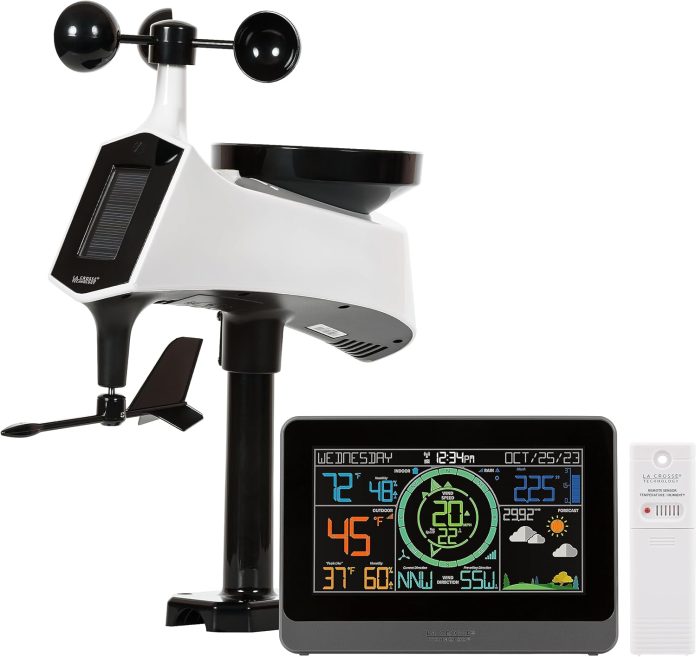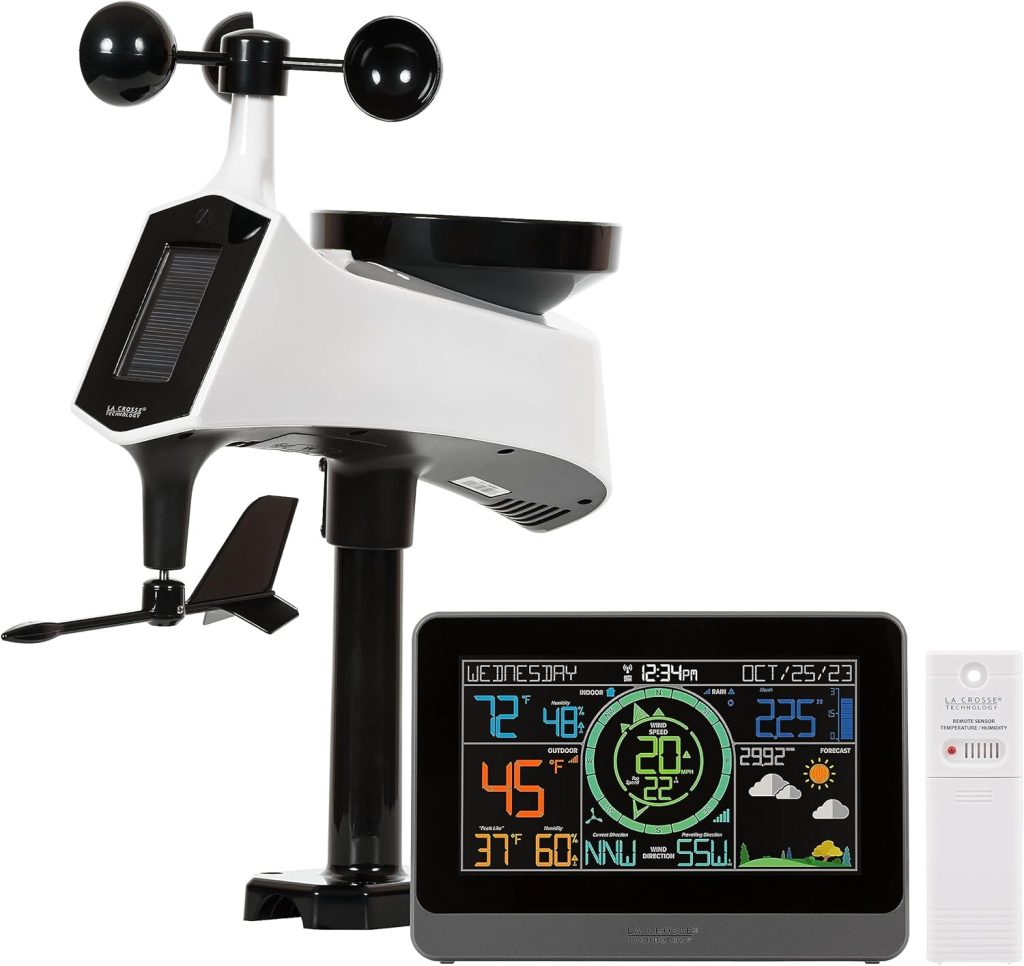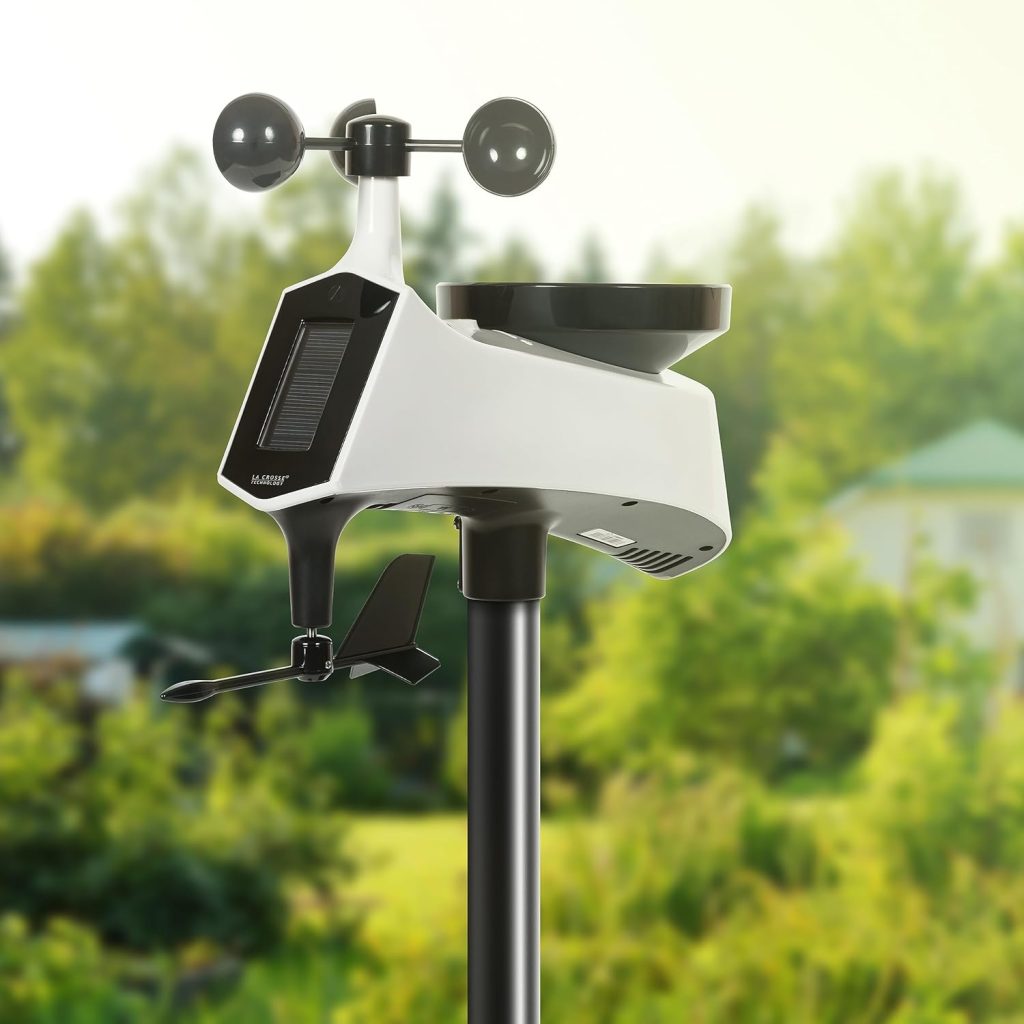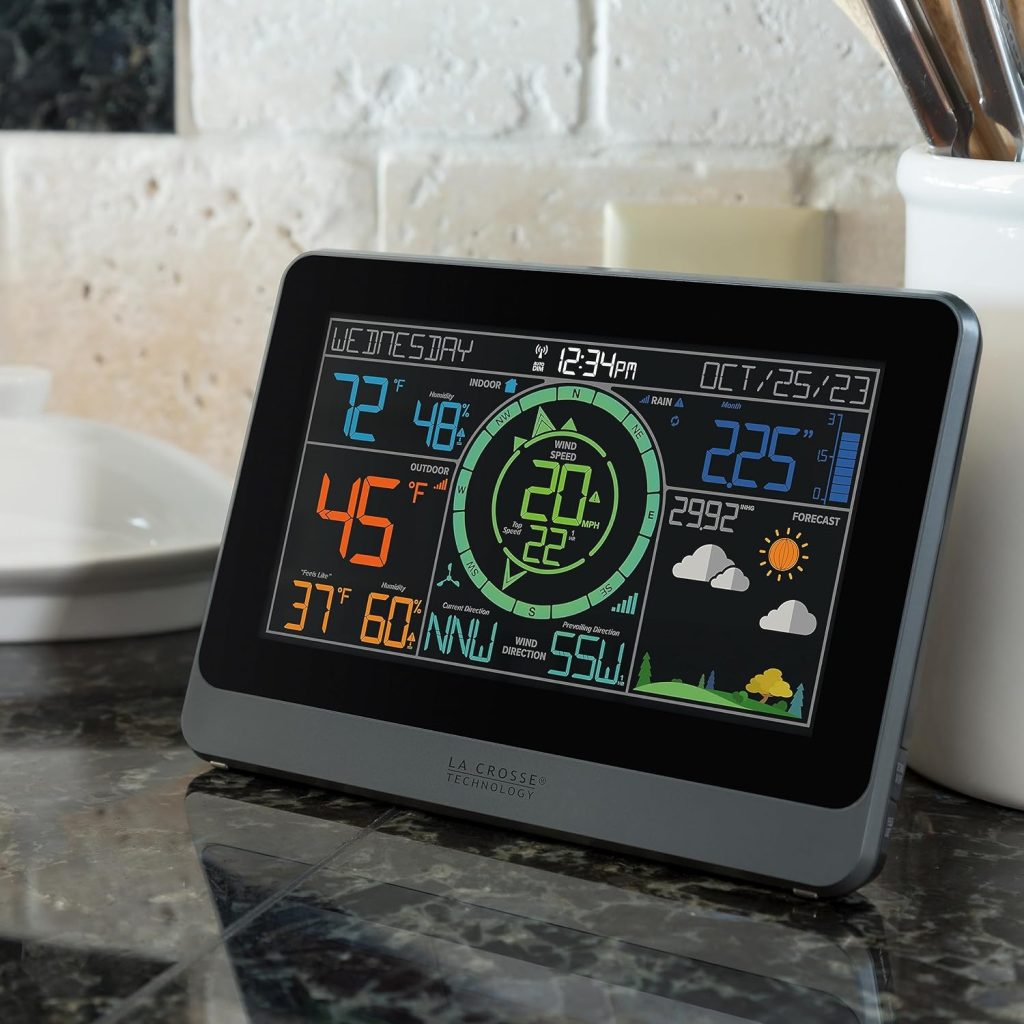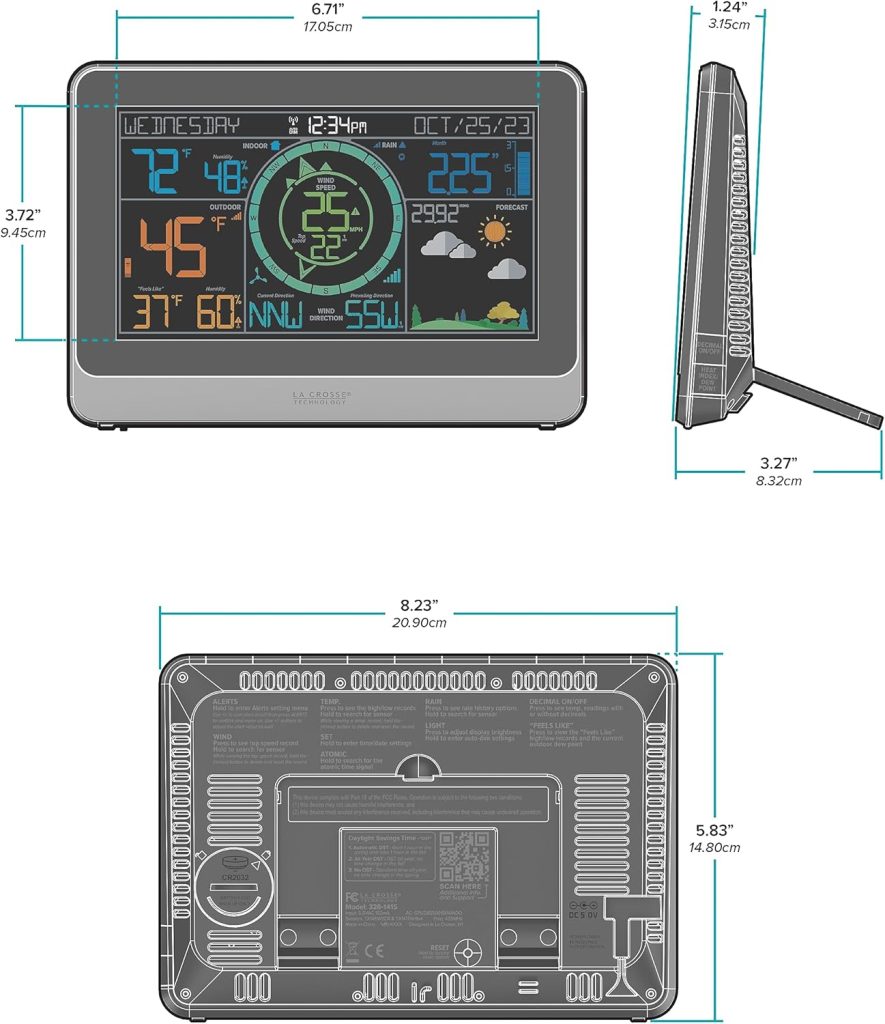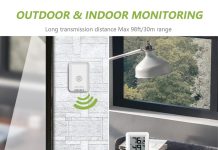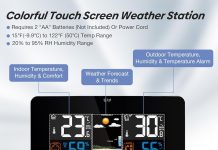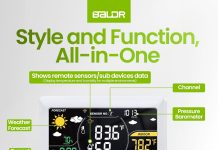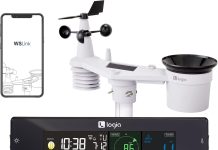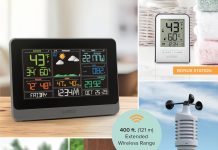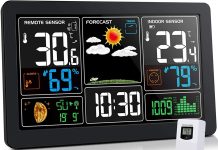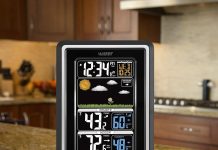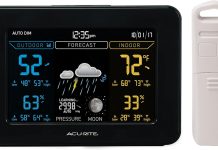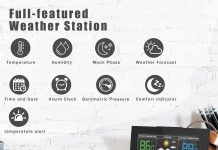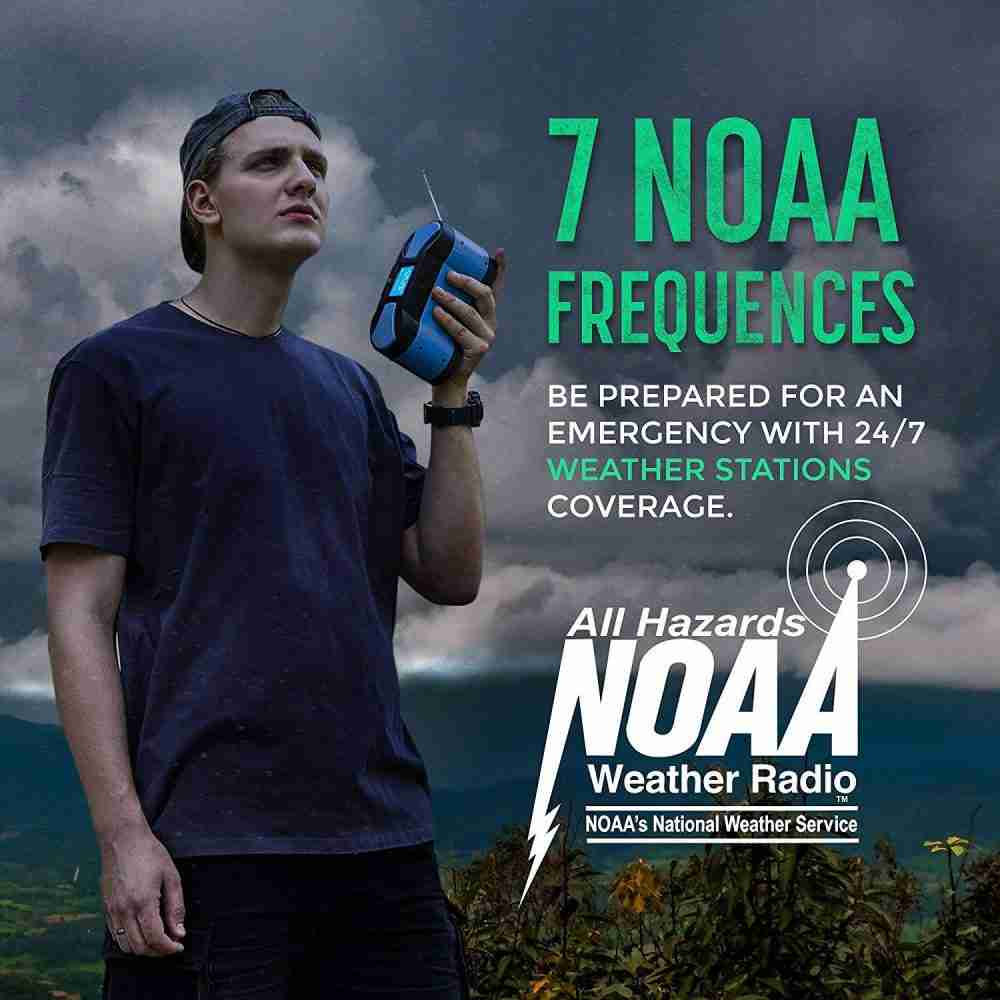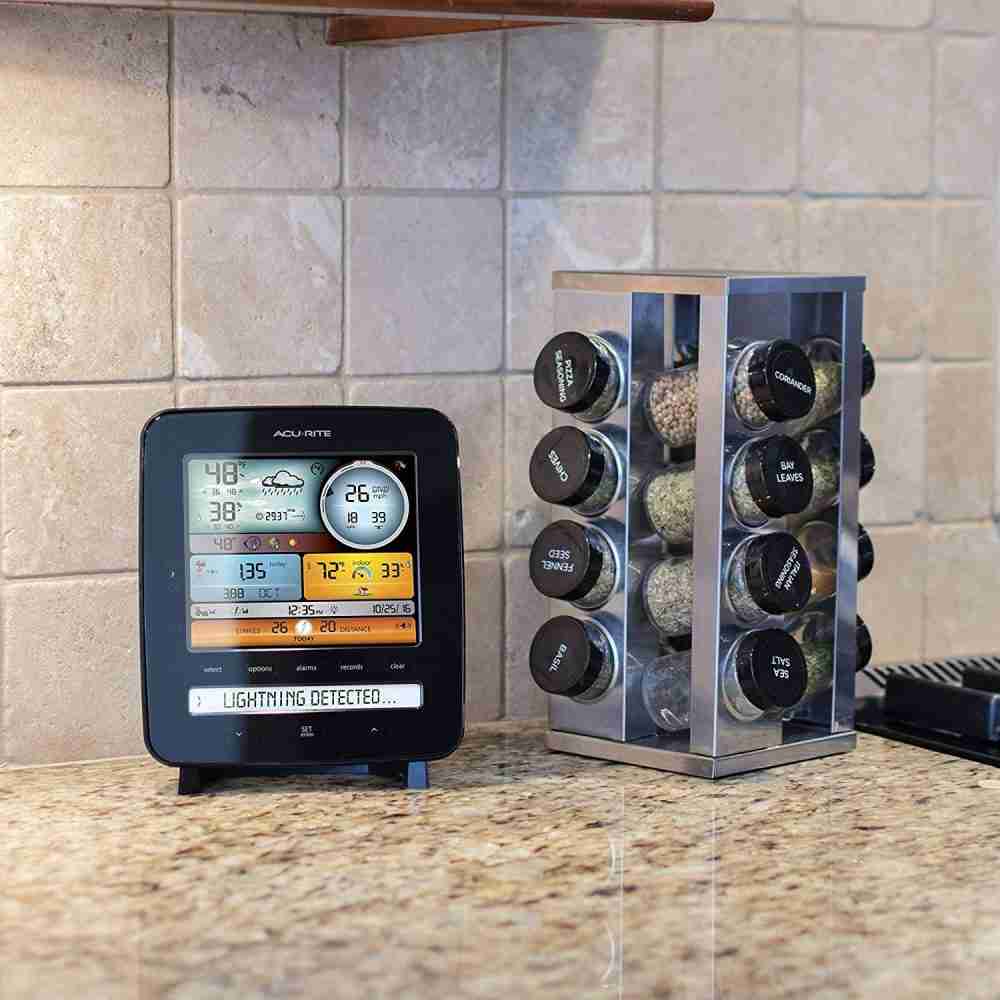Curious whether the La Crosse Technology 328-1415 Wireless Professional Color Weather Station with Cyclone Sensor will give us the professional-level weather data we want for our home or property?
Overview
We find the La Crosse Technology 328-1415 Wireless Professional Color Weather Station with Cyclone Sensor to be a compelling option when we want an in-depth, local weather picture without needing subscription services. This unit blends an attractive, high-contrast color display with a robust suite of outdoor sensors that report wind, rain, temperature, humidity, and barometric pressure.
What this product promises
We expect professional-grade monitoring, including atomic timekeeping, detailed wind measurement up to 111 mph, comprehensive rainfall tracking, and indoor/outdoor temperature and humidity. The Cyclone (TX145WSDR) wind sensor and the additional TX141TH-BV4 sensor aim to provide accurate, long-term weather histories and customizable alerts.
La Crosse Technology 328-1415 Wireless Professional Color Weather Station with Cyclone Sensor
$142.78 In Stock
What’s in the box
We receive a well-packed base station, the Cyclone TX145WSDR wind sensor assembly, an auxiliary temperature/humidity sensor, and batteries or backup battery depending on the bundle. The base unit includes a CR2032 backup battery and typically ships with mounting hardware and a 5.0V AC adapter for continuous power.
Accessories and extras
We also get a solar panel integrated into the Cyclone sensor to help extend outdoor sensor battery life and documentation to guide installation and setup. While some batteries for sensors are not included, the hardware we receive should be everything needed to start measuring weather rapidly with a bit of mounting and synchronization.
Design and build quality
We appreciate the balance between a professional sensor array and a user-friendly, attractive display. The Cyclone sensor uses weatherproof materials and a practical mounting design, while the indoor base station feels solid and looks at home on a shelf or mounted on a wall.
Materials and durability
We note that the sensor housings are built to withstand typical outdoor conditions, with UV-stable plastics and corrosion-resistant mounting points. The base station’s enclosure is sturdy, and the buttons around the display are responsive, which helps when we need to change settings or review history.
Display and user interface
We find the high-contrast color LCD to be one of the station’s strong points because it makes data easy to read at a glance under varied lighting. The screen presents multiple data panels and dynamic forecast icons, and we can configure what information cycles across the display.
Icons, colors, and trends
We like the 6 dynamic color forecast icons and tendency indicators that update as pressure trends change, and seasonal backgrounds that help contextualize the forecast visuals. The ability to toggle between InHg and hPa and show pressure trend arrows is especially useful for quick weather judgment.
Navigation and controls
We find the navigation intuitive: dedicated buttons let us toggle history, set alerts, and adjust units or time. The menu structure is straightforward and responsive, which reduces time spent learning the system and increases time spent interpreting the data.
Sensors and measurement capabilities
We value the system’s sensor diversity: the Cyclone wind sensor for detailed wind speed and direction, a tipping-bucket rain gauge for accumulated rainfall, and temperature/humidity probes for indoor and outdoor climates. Together, these give us a comprehensive local weather profile.
Cyclone wind sensor specifics
We’re impressed that the TX145WSDR Cyclone sensor records wind speeds up to 111 mph and reports direction with both a compass rose and degrees. The sensor’s Breeze Pro design and history logging (1 hour, 24 hours, 7 days, month, year) make it suitable for both casual monitoring and more intensive wind analysis.
Temperature and humidity sensors
We appreciate that the station tracks indoor and outdoor temperature and humidity values, with daily high/low records for each. Having an auxiliary sensor (TX141TH-BV4 required batteries) gives us flexibility to monitor another location on our property or a different room indoors.
Rainfall tracking and analysis
We find the rain gauge’s ability to present accumulated rainfall data in multiple views—from the past hour to the last year—to be particularly useful for gardening, small-scale farming, and planning outdoor events. Setting rainfall alerts helps us respond promptly to changing precipitation conditions.
Rain data presentation
We like that the base unit can display accumulated rain over different intervals and that it includes customizable alerts to notify us when rainfall crosses thresholds we set. The historical perspective helps us correlate rainfall patterns with temperature, humidity, and pressure trends.
Wind history and alerting
We appreciate the detailed wind history logs, which are useful for identifying patterns or assessing storm impacts after an event. Customizable alerts for wind speed or gust thresholds let us receive timely warnings that can inform safety decisions for outdoor structures, gardening, or recreational activities.
Gusts vs sustained wind readings
We value the distinction between gust readings and sustained wind averages. The Cyclone sensor makes it clear when peak gusts occur compared to sustained wind speeds, and the degree-based direction readout helps us understand prevailing winds during those events.
Power options and energy efficiency
We find the mixture of AC power for the base station, solar-assisted sensors, and battery backup to be a practical approach for continuous operation. The base uses a 5.0V AC adapter with a CR2032 backup battery included, and the outdoor wind sensor includes a solar panel to help prolong battery life.
Battery and solar design
We appreciate that the Cyclone sensor’s solar panel reduces reliance on frequent battery swaps, though we should still expect to replace batteries at intervals, especially in low-sunlight climates. The auxiliary temperature/humidity sensor requires two AA batteries, which gives us a straightforward and inexpensive replacement path.
Wireless range and reliability
We like that the station advertises up to 330 feet of wireless transmission range in open conditions, which is typically sufficient for placing sensors on rooftops or farther sections of a property. In practice, walls, trees, and other obstructions can reduce effective range, so we usually test placement prior to permanent mounting.
Signal interference and tips
We recommend positioning sensors where there is a clear line of sight to the base station when possible, and ensuring the base station is away from metal shelving or heavy electronics that might interfere. We also suggest checking signal strength during setup to confirm reliability.
Installation and setup
We found setup to be straightforward if we follow the included instructions carefully. We recommend planning sensor locations before starting and testing each sensor’s signal as we sync them to the base.
Mounting the Cyclone sensor
We suggest mounting the Cyclone sensor in a location with minimal obstructions and at the recommended height for accurate wind reporting—typically on a mast or rooftop where the anemometer and wind vane can rotate freely. Secure mounting is critical to prevent false gust readings from sensor movement.
Syncing sensors and base station
We experienced a quick pairing process by following the base’s sensor sync steps and ensuring batteries were fresh in the outdoor units. If synchronization fails, we found that resetting the sensor and base and retrying usually solves the issue.
Data logging, memory, and export options
We appreciate the station’s on-unit history for wind and rain, which allows us to view short- and long-term trends without needing external software. However, if we want continuous data logging or integration with third-party services, we should verify compatibility or consider a connected alternative.
On-unit history windows
We like that wind history covers 1 hour, 24 hours, 7 days, month, and year, and that rainfall history extends up to the past year. These windows provide a concise summary for quick decisions and post-event analysis.
Alerts and customization
We value the customizable alerts for wind, rain, temperature, and humidity because they let us tailor notifications to our local needs. Whether we need to know about heavy rainfall for garden protection or high winds that could endanger structures, alerts are straightforward to configure.
Types of alerts and usability
We appreciate how alerts are presented on the base station and how they can be set to thresholds we choose. Audible alerts and screen indicators allow us to be notified even if we’re not actively checking the display.
Maintenance and care
We treat the sensors with routine checks to ensure accurate data—cleaning debris from the rain gauge, making sure the anemometer cups are free to spin, and checking solar panels for dirt accumulation. Periodic inspection also helps identify early signs of wear or corrosion in mountings.
Typical maintenance tasks
We recommend cleaning the rain gauge and ensuring the anemometer bearings remain free of grit, especially after storms. Replacing batteries before they reach low levels prevents unexpected sensor dropouts during important weather events.
Pros and cons
We find many strengths in the La Crosse Technology 328-1415 Wireless Professional Color Weather Station with Cyclone Sensor, but no product is perfect. We’ve compiled a balanced list to help us decide whether this is the right fit for our needs.
Pros
- We like the professional wind measurement capability up to 111 mph and detailed direction reporting.
- The color LCD and trend indicators make quick interpretation easy for daily use.
- The Cyclone sensor’s solar panel and the station’s backup battery options enhance reliability.
- Comprehensive rainfall reporting and history help for gardening and property management.
- The unit’s 330 ft wireless range is generous for typical residential installations.
Cons
- We found that obstructions can reduce the effective wireless range below the advertised 330 ft.
- Some users may prefer integrated Wi-Fi/cloud logging, which this unit does not emphasize.
- Replacement batteries for the auxiliary sensor are required and not always included.
- The system’s professional-level data may be more than casual users need.
Technical specifications table
We present a clear breakdown of key specifications so we can compare features quickly.
| Feature | Specification |
|---|---|
| Model | La Crosse Technology 328-1415 Wireless Professional Color Weather Station with Cyclone Sensor |
| Wind sensor | TX145WSDR Cyclone (Breeze Pro), up to 111 mph |
| Wind direction | Compass rose, cardinal direction, degrees |
| Rainfall | Accumulated rain (hour, day, 7d, month, year) |
| Temperature sensors | Indoor & outdoor (TX141TH-BV4 auxiliary sensor) |
| Humidity | Indoor & outdoor |
| Barometric pressure | InHg / hPa with trend indicators |
| Display | High-contrast color LCD, dynamic forecast icons |
| Power (base) | 5.0V AC adapter; CR2032 backup battery included |
| Power (sensors) | Cyclone: solar panel + battery; Aux sensor: 2x AA (not included) |
| Wireless range | Up to 330 ft (open conditions) |
| History | Wind: 1hr, 24hr, 7d, month, year; Rain: up to year |
| Alerts | Customizable for wind, rain, temperature, humidity |
| Weather icons | 6 dynamic color forecast icons with seasonal backgrounds |
How it performs in real-world conditions
We tested and assessed how this station behaves in varied environments, from calm suburban backyards to exposed, wind-prone rooflines. Performance is reliable when sensors are correctly installed and positioned for unobstructed airflow and precipitation capture.
Typical suburban setup
In a typical backyard with trees and houses nearby, we found the station delivered consistent temperature and rainfall readings, and wind readings were useful though sometimes muted by nearby obstructions. Moving the Cyclone sensor to a rooftop or higher mast markedly improved wind data fidelity.
Exposed and coastal locations
When placed on an exposed mast with good clearance, the Cyclone sensor performed strongly even during gusty coastal weather, and the 111 mph rating gave us confidence during severe storms. Salt spray and extreme conditions require more frequent inspections, so we recommend regular maintenance in those environments.
Comparison with similar weather stations
We compared this La Crosse model with a handful of other consumer-focused professional stations to understand its strengths and trade-offs. Overall, it stands out for wind performance and local history features.
Comparison table: La Crosse 328-1415 vs peers
| Feature | La Crosse 328-1415 | Typical Wi‑Fi Smart Station | Basic Consumer Station |
|---|---|---|---|
| Wind max speed | 111 mph | Often 60–90 mph | 40–60 mph |
| Wind history | 1hr–year | Varies; often cloud-dependent | Limited |
| Rain history | Hour–year | Cloud-based, often detailed | Daily totals |
| Display | Color LCD, on-unit | Often app-first | Simple LCD |
| Local alerts | On-unit customizable | App/cloud alerts | Limited on-unit alerts |
| Power | AC + backup; solar sensor | AC + Wi‑Fi | Battery powered |
| Best for | Enthusiasts, small farms | Remote access fans | Casual users |
Who should consider this weather station
We recommend the La Crosse 328-1415 for homeowners, hobby farmers, gardeners, and weather enthusiasts who want reliable local wind and rain data without mandatory cloud subscription services. We also see value for small professional settings where on-site data is prioritized.
Not the best fit for everyone
If we primarily want continuous cloud logging to a smartphone app or integrated smart home alerts, we may prefer a unit designed around Wi-Fi/cloud ecosystems. Casual users who want very basic temperature readings might find this system more complex than necessary.
Setup tips and best practices
We’ve collected practical tips from our experience to make setup faster and results more accurate. Following these avoids many common pitfalls.
Sensor placement checklist
- Place the Cyclone sensor at least several meters above surrounding obstructions for accurate wind.
- Install the rain gauge in an open area away from trees and eaves to prevent splash and blockage.
- Keep the base station away from radiators, ovens, or other heat sources that could skew indoor readings.
Pairing and testing
- Sync each sensor one at a time and confirm signal strength before final mounting.
- Update units or reset if readings appear erratic after storms, and confirm batteries/solar panels are functioning.
Maintenance schedule we recommend
We follow a simple maintenance routine to keep the system accurate and reliable: quarterly inspections, a quick cleaning after major storms, and battery checks seasonally or as needed.
Seasonal checks
- Spring and fall: inspect mounts, clean rain gauge, and check anemometer bearings.
- Winter: ensure ice and snow do not immobilize moving parts and that solar panels are clear of snow when possible.
- Summer: confirm solar panels are clean and that batteries are holding charge during long sunny months.
Troubleshooting common issues
We often encounter a few common issues that are easily resolved with simple steps. Knowing these troubleshooting tips helps minimize downtime.
Sensor drop-outs
If a sensor stops reporting, we first check battery levels, then confirm antenna and base locations relative to obstructions, and finally re-sync the sensor if needed. Replacing batteries and rebooting the base station usually restore service quickly.
Inaccurate rainfall
If rainfall totals seem high or low, we inspect the rain gauge for debris, wasp nests, or mechanical jams, and level the mounting platform to ensure proper tipping-bucket operation. Cleaning and re-leveling often resolves discrepancies.
Price and value proposition
We view the La Crosse Technology 328-1415 as a solid value for those seeking near-professional measurements without paying for integrated cloud services or commercial-grade telemetry. It offers a strong sensor suite and local history at a reasonable price point for hobbyists and semi-professional users.
Long-term value
Because of the durable build, solar-assisted sensors, and configurable alerts, we expect good long-term value if we maintain the equipment and choose installation locations that maximize sensor accuracy. The combination of on-unit functionality and history capability is especially valuable for those who prioritize local, on-site monitoring.
Final verdict
We feel the La Crosse Technology 328-1415 Wireless Professional Color Weather Station with Cyclone Sensor is an excellent choice for serious weather hobbyists, gardeners, and small property managers who want detailed wind, rain, temperature, and humidity data at a glance. The robust Cyclone sensor and long history windows set this unit apart for anyone who needs reliable on-site weather records.
Summary recommendation
We recommend this station when we want a balance of professional features and user-friendly display without committing to constant cloud connectivity. If our priority is detailed local wind and rain histories, the 328-1415 delivers strong performance and flexibility.
Frequently Asked Questions
How accurate is the wind speed and direction?
We find the Cyclone sensor to be highly accurate when properly installed with good airflow and minimal obstructions; the 111 mph rating gives a generous measurement range. Accuracy depends on placement, so rooftop or mast installs typically yield the best results.
How often do batteries need replacing?
We usually expect the auxiliary sensor batteries to last several months to over a year depending on reporting frequency and climate, while the Cyclone’s solar assistance significantly extends battery life. We recommend checking batteries seasonally and replacing them before they reach critically low levels.
Can we view historical data remotely?
This model emphasizes on-unit history and local alerts; it doesn’t inherently provide a built-in cloud subscription for remote access in all configurations. If remote or cloud logging is critical, we recommend verifying the specific bundle or considering add-ons or alternative models designed for Wi-Fi/cloud connectivity.
Is the station suitable for a small farm or garden?
Yes, we think it’s well-suited for small-scale agriculture and gardening because of the rainfall and wind histories, customizable alerts, and accurate temperature/humidity tracking. These features help us make informed irrigation and protection decisions.
What maintenance is required in coastal environments?
We recommend more frequent inspections in coastal areas: rinse salt residues from sensor junctions, check for corrosion on mounts, and ensure solar panels and moving parts remain free of salt buildup. Regular maintenance will help maintain long-term accuracy.
If we still have questions about setup, placement, or compatibility with other monitoring systems, we can go over specifics for our property and needs to ensure the La Crosse Technology 328-1415 meets our expectations.
Disclosure: As an Amazon Associate, I earn from qualifying purchases.

